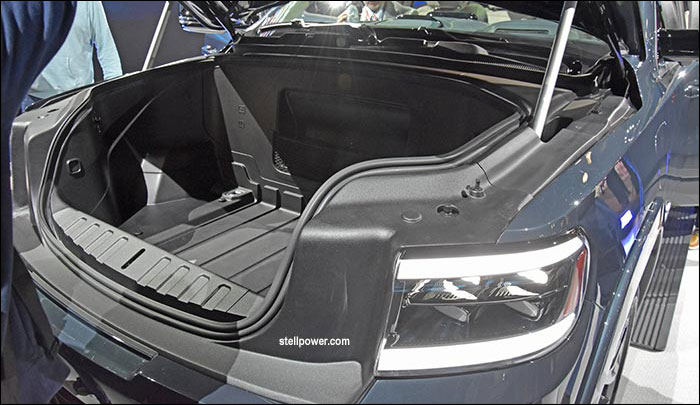Analysis. The industry is steadily moving towards electrification and full electric (via batteries or hydrogen fuel cells) to help with emissions and fuel economy. While there are many advantages, many in the buying public have vociferously objected—and do so again whenever any article so much as mentions electric cars or, in some cases, hybrids.
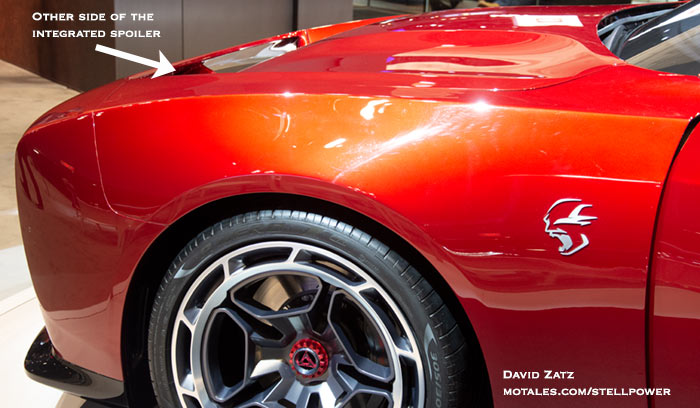
Could this negative outlook be due to how electrification is being presented to the public? Perhaps, especially with regard to the enthusiast community that has become a surprisingly large portion of the Stellantis North America automotive community, due to each brand’s pursuit of ever more capable vehicles within their niches (Chrysler excepted since it hasn’t defined a niche).
Since the launch Dodge Viper and Magnum V8 engines, Dodge and then Ram have been leading the horsepower (in Cummins’ case, torque) wars with big old-school V8s and retro-inspired muscle cars and pickup trucks. These have been successful enough to appear in blockbuster movies and mini-movie ads and Pennzoil commercials; and today they are part of the urban culture including the big Mopar family known as the “Brotherhood of Muscle.”
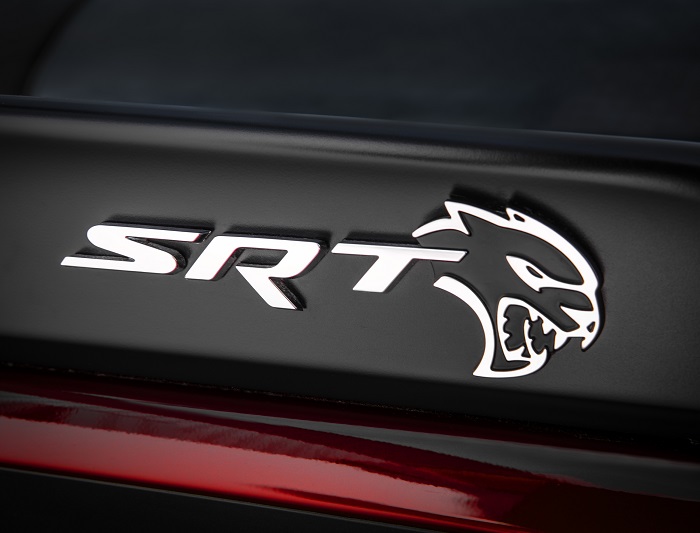
Dodge has gained immense levels of attention, nearly unmatched in the automotive community, among enthusiasts; but the industry has been moving in a different direction—electrification.
To be clear, Peugeot and Fiat were were no stranger to small-engine cars, the polar opposites of the Hemi and Hellcat engines we are used to. Peugeot’s largest engine, even in a DS, was a 1.6 liter four-cylinder.
How does Dodge (and, to a degree, Ram and Jeep) fit in? How can they reconcile their big-power, big-cube powertrains with the efficiency the world is moving to?
Many Mopar fans are dismayed by the very idea of moving from the 21st-century Mopar norm. Dodge has tried to react with cars like the Charger Banshee and Daytona concept, while the other brands have pushed the Airflow concept and Ram REV 1500 concept to the forefront of media and social media, emphasizing that direction along with, to a lesser degree, the new Hurricane family of engines.
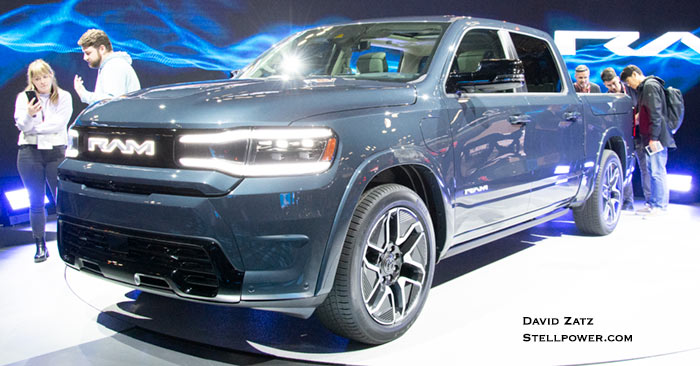
The Ram 1500 REV concept and the Ram 1500 REV production truck are rather different, although they share some styling; and REV is not the only Ram 1500, as Hurricane powertrains will come in to replace the Hemi V8s with more power and likely 10% better mileage. The 2025 Durango is also continuing, moving to the Hurricane powertrain. The Hurricane was even on display at the Roadkill Nights event in Detroit.
The Hurricane-powered Direct Connection car didn’t wow the crowd, despite its claimed 800 hp. Still, people were talking about it. The Mopar boffins collect data in the crowd and on social media, then go back to their labs for studying and tweaking while the CEOs study public reactions. Many are focused on the Banshee and Hurricane—the gateways to what is coming has slipped into market already.
People tend to miss the little Dodge Hornet. It’s on an already-condemned platform, and shares too much with the Alfa Romeo Tonale; and some complain it’s too small. However, not many have really looked at cars like it, or the Jeep 4xe Wrangler and Grand Cherokee, to see where Mopar is going with electrification.
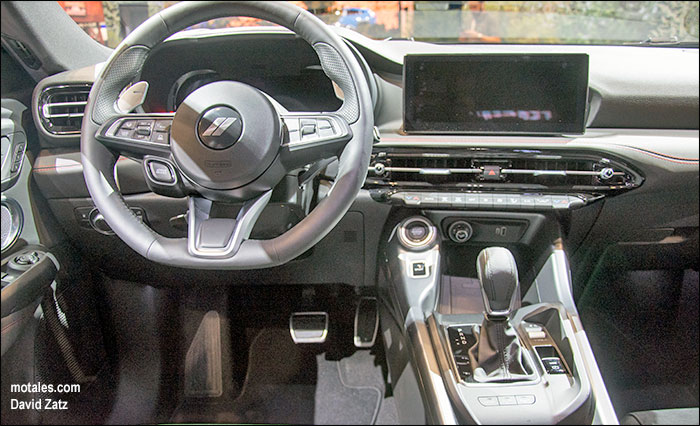
More cars have hybrid power than many realize. Audi uses electric superchargers to defeat turbo lag on some of their vehicles; several AMG vehicles are hybrids, following Lexus, which had hybrid-performance cars over a decade ago; the Acura NSX was a hybrid, every Toyota Sienna is one, and the Ram E-Torque helps in some situations (it mostly makes the stop/start easier).
Dodge and Jeep have taken four-cylinder turbocharged engines and turned them into powertrains that punch well above their weight by adding electric motors. Whether the motors are in the starter, in the transmission, or next to the axle, they get the cars up to speed in a hurry and make them perform like V8s while reducing emissions.
People can scoff at the 4xe Wrangler’s gains; it doesn’t get better economy than the base V6. However, it turns in performance far closer to the 392 V8 than it does the 3.6 liter Pentastar; it wasn’t tuned for economy, it was tuned for acceleration.
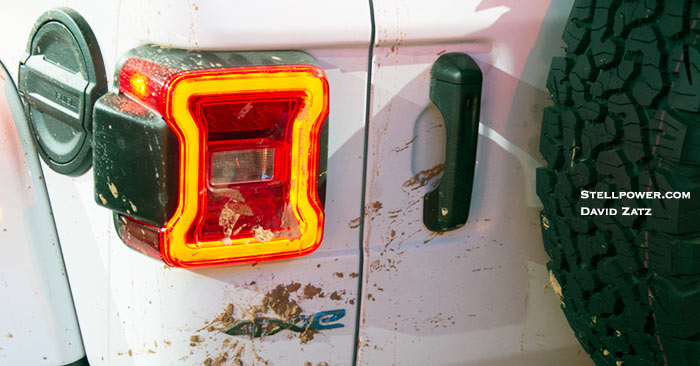
Mating these systems to the Hurricane-6 inline engines, which already beat 5.7 and 6.4/392 power and torque, should bring Hellcat levels of performance; the HurriCrate promises to give that engine some credibility in racing once people have had enough time to figure out what works and what doesn’t.
Powertrain setups like this could fill the entire Stellantis North American fleet and the EPA would be relieved. Push-to-pass and other features pioneered on the Hornet may make their ways into the other vehicles, e.g. added to Ram trucks for towing assistance. The Fratzonic system provides some thought as to those who demand V8s “because the sound.”
Meanwhile, it seems that to continue to beat Tesla at the track, Dodge will need either a full-electric or a hefty PHEV-style hybrid coupled with the high-output Hurricane. Or, perhaps, a much lighter car coupled to the existing Hurricane High Output, which has been rumored.
Once Dodge produces a car that is lighter than the current Charger Scat Pack, has more power, and includes AWD to put the torque to the ground instead of spinning the tires, people may see the benefits of a new generation of cars—especially if the company becomes the first automaker in the world to promise that, if they don’t make an electronic part, they will release the blueprints to the aftermarket, period, end of story. (That level of support is one of the fears people have of modern cars—after ten years, parts can dry up.) The performance would speak for itself; and the promise of long-term support would, too.
An all-electric future may or may not arrive in the United States; those states which demand one could just as easily ease back, and at the national level, the “ask” is 50% of sales by 2030, when now-promising battery designs and chemistries will already be old. In Europe, battery-electrics have just passed diesels in popularity, but are still less than 20% of sales. But hybrids? Their day is just dawning.
